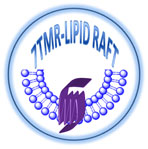Caveolins and intracellular calcium regulation in human airway smooth muscle
| Title | Caveolins and intracellular calcium regulation in human airway smooth muscle |
| Publication Type | Journal Article |
| Year of Publication | 2007 |
| Authors | Prakash, YS, Thompson MA, Vaa B, Matabdin I, Peterson TE, He T, Pabelick CM |
| Journal | Am J Physiol Lung Cell Mol Physiol |
| Volume | 293 |
| Pagination | L1118-26 |
| Date Published | Nov |
| ISBN Number | 1040-0605 (Print)1040-0605 (Linking) |
| Accession Number | 17704188 |
| Keywords | Blotting, Western, Bradykinin/pharmacology, Bronchi/cytology/*physiology, Calcium/*metabolism, Caveolae/*physiology, Caveolin 1/genetics/*metabolism, Caveolin 2/genetics/*metabolism, Caveolin 3/genetics/*metabolism, Electrophysiology, Fluorescence, Histamine/pharmacology, Humans, Muscle, Smooth/*physiology, Receptor, Muscarinic M3/genetics/metabolism, Receptors, Bradykinin/genetics/metabolism, Receptors, Histamine/genetics/metabolism, Respiratory System/cytology/metabolism |
| Abstract | Regulation of intracellular Ca(2+) concentration ([Ca(2+)](i)) is a key factor in airway smooth muscle (ASM) tone. In vascular smooth muscle, specialized membrane microdomains (caveolae) expressing the scaffolding protein caveolin-1 are thought to facilitate cellular signal transduction. In human ASM cells, we tested the hypothesis that caveolae mediate Ca(2+) responses to agonist stimulation. Fluorescence immunocytochemistry with confocal microscopy, as well as Western blot analysis, was used to determine that agonist receptors (M(3) muscarinic, bradykinin, and histamine) and store-operated Ca(2+) entry (SOCE)-regulatory mechanisms colocalize with caveolin-1. Although caveolin-2 coexpressed with caveolin-1, caveolin-3 was absent. In fura 2-loaded ASM cells, [Ca(2+)](i) responses to 1 microM ACh, 10 microM histamine, and 10 nM bradykinin, as well as SOCE, were attenuated (each to a different extent) after disruption of caveolae by the cholesterol-chelating drug methyl-beta-cyclodextrin. Transfection of ASM cells with 50 nM caveolin-1 small interfering RNA significantly weakened caveolin-1 expression and blunted [Ca(2+)](i) responses to bradykinin and histamine, as well as SOCE, but the response to ACh was less intense. These results indicate that caveolae are present in ASM and that caveolin-1 contributes to regulation of [Ca(2+)](i) responses to agonist. |
| URL | http://www.ncbi.nlm.nih.gov/entrez/query.fcgi?cmd=Retrieve&db=PubMed&dopt=Citation&list_uids=17704188 |
